Do you prefer to work on your car yourself? Do you like the idea of being able to fix a variety of auto problems in your own garage? Do you aim for professional-grade detailing and upgrades? Then these tips are exactly what you need for DIY car body repair. Note: Don't forget safety. Always wear safety glasses and protective clothing when working on your vehicle, and understand all precautions to take when working with toxic or corrosive chemicals.
11 Great Tips for DIY Car Body Repair
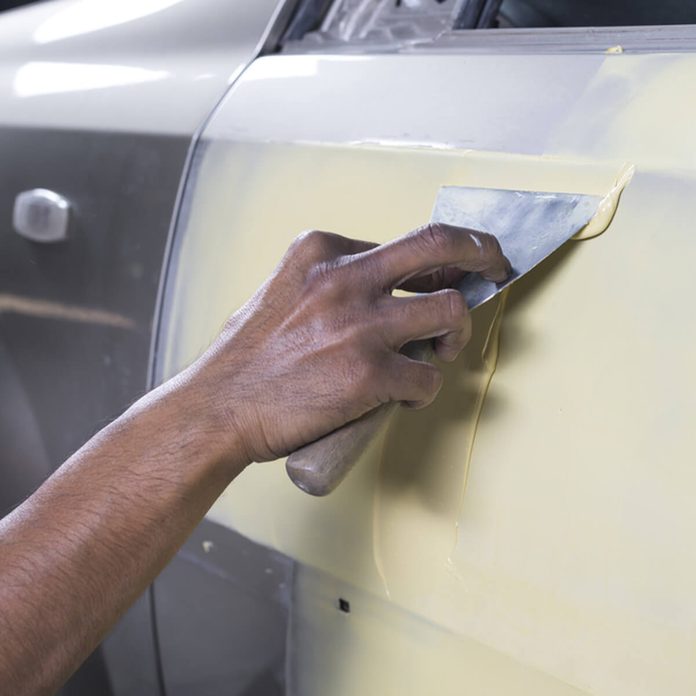
Acquire High Quality Filler and a Mixing Board
For filling in dents and scratches, you’ll need high-quality auto body filler and a mixing board to prep and apply it. Don’t skip meticulous preparation for auto body work! To learn more about applying filler properly, check out our guide that walks you through the process.
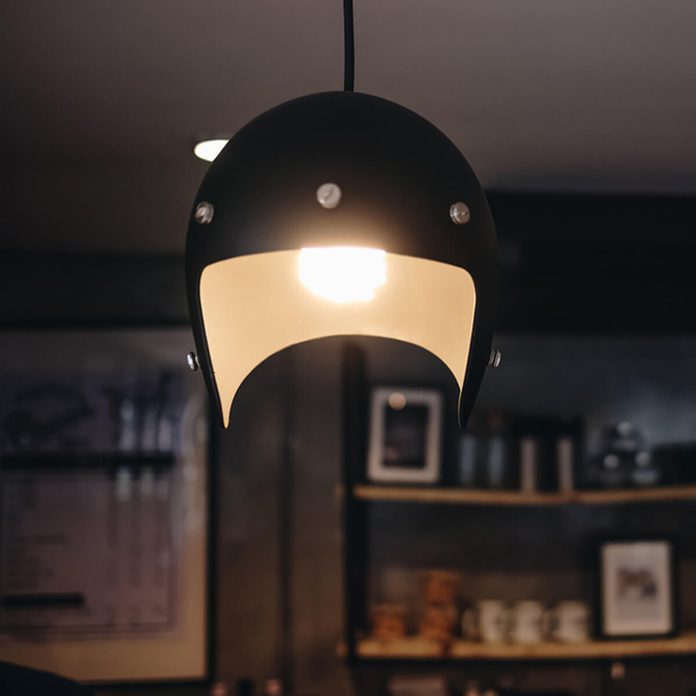
Task Lighting
When it comes to taking stock of a dent and working on a repair, proper lighting is very important. Make sure your garage is brightly light with strong lights that easily illuminate every plane and crack before you begin auto body work. We have a guide on choosing the best LED lights for car body repair, too!
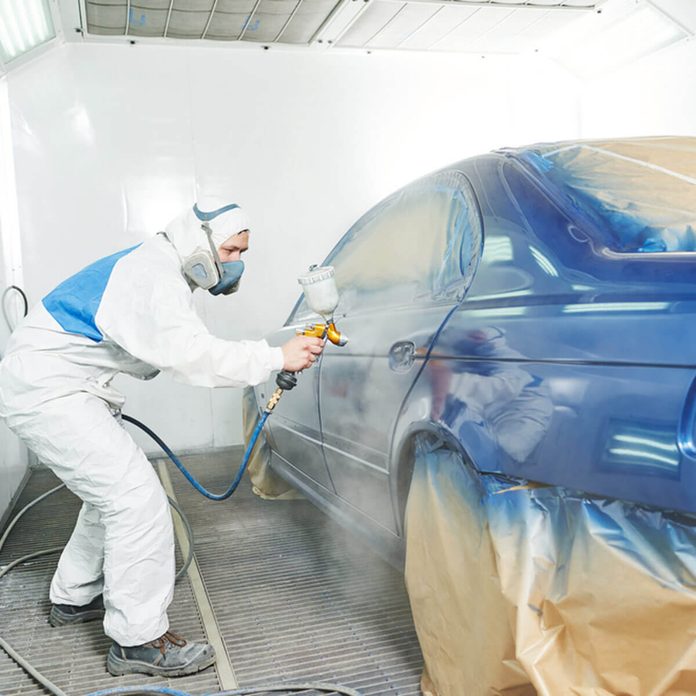
For the Best Results, Get a Compressor and Paint Sprayer
Many car body repairs will require you to fix and re-touch a section of your car. Once you have matched the paint (it’s best to go straight to the manufacturer for the paint), you need a high-quality paint sprayer for auto body work, preferably with a light enough touch to easily apply a few coats over several days. Take your time with these finishing car body repair steps, and check out our guide on paint sprayers!

Use a Sanding Tool Instead of Your Hands
Sanding is important when repairing car body dents, dings and scratches, as well as buffing out a new paint job. However, use a sanding block or a sanding tool rather than your hands for auto body work. Sanding with just your hands often results in “natural” grooves and errors, sometimes even when you’re very careful. For a smooth finish, consider buying an all-purpose sander.
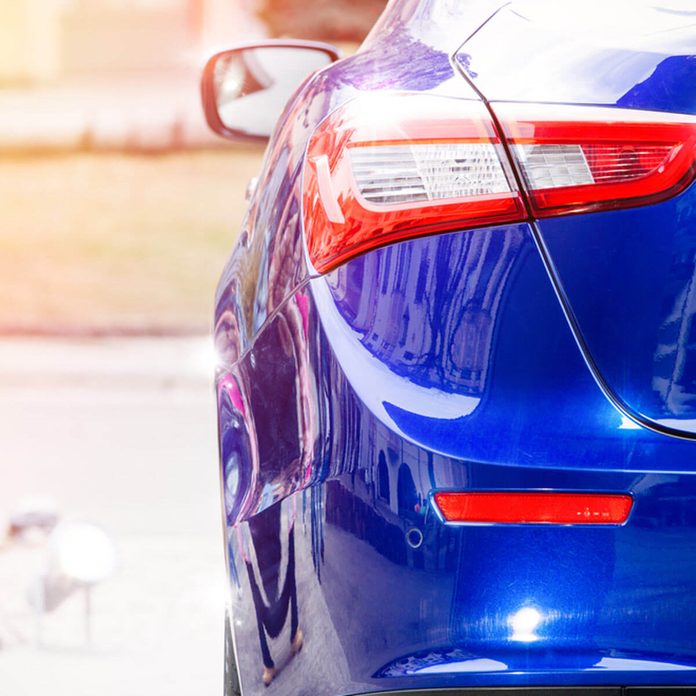
Finishing Glaze
Finishing glaze serves two important purposes in auto body work. First, if you have very minor flaws or scratches in your paint coat, finishing glaze may be able to fix the problem (make sure you choose the self-leveling kind). Second, for larger repair projects, glazing is an important step before applying the final coats of paint to a repaired surface.

Fix Windshield Cracks With the Right Kit
Just as chips in your paint can cause rust, chips in your windshield can spread out into annoying damage, so it’s best to fix them right away. The good news is that you can order or pick up windshield repair kits that use resins to block the crack or chip before it causes more damage. With the right tools, you can also replace side power windows! Here’s what you need to know about windshield repair.

Replace Your Headlights for More Visibility
When a headlight dies, or you want a replacement that adds more visibility, you can replace your own headlights with only basic tools. Make sure you purchase headlights compatible with your model, and we can show you how to change them as part of your car body repair. While you’re it, here’s what you need to know about car trim molding.
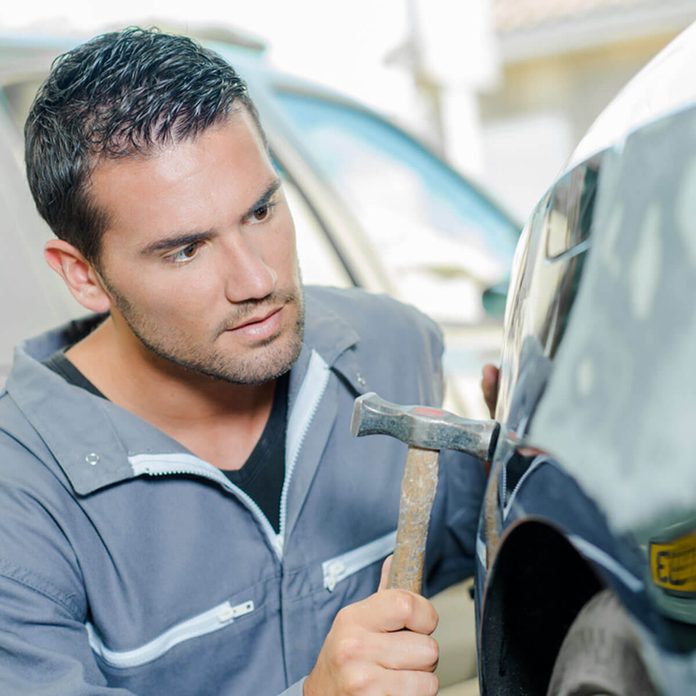
High-Quality Performance Tool Set
If you are doing serious auto body work that involves using sheet metal to replace rusted sections or fix damage, then you need an auto work performance tool set. This tool set will help you remove, apply and shape auto parts. Here are a few before and after car detailing photos.

Have Old Side Molding? Remove It!
Is your car body side molding starting to look ragged or coming loose? You don’t have to put up with it! Fixing side molding is an inexpensive project that requires prying off the old molding with a putty knife, cleaning the area with an adhesive remover and reattaching the molding. We can show you how it’s done.

Replace Broken Mirrors
Have mirror trouble? Broken or bashed side mirrors are one of the most common car body repairs, but you don’t have to take your car into a shop to get them fixed. You can order new mirrors from the manufacturer and purchase panel removal tools from an auto body shop and do the work yourself. We can walk you through all the steps.
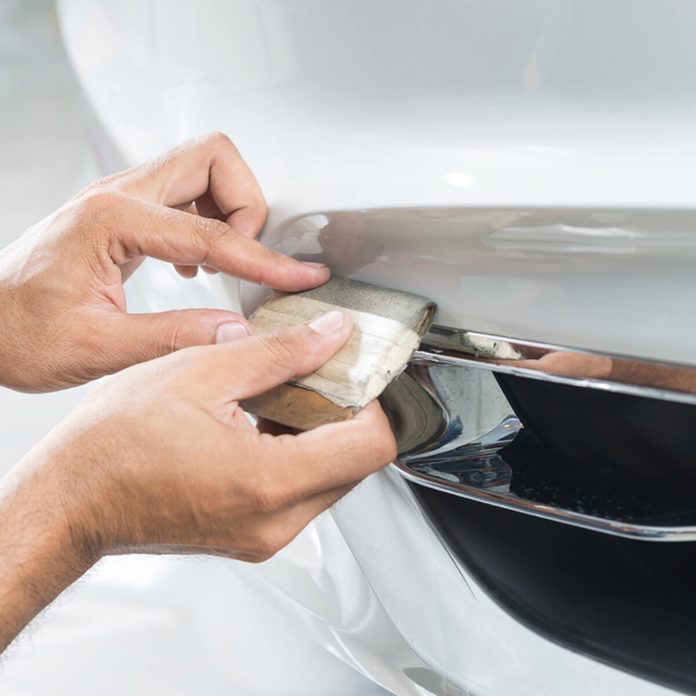
Paint Film for Long-Term Protection
Do you want to protect the excellent paint job on your hood or other parts of your vehicle? Consider applying a protective film to keep that paint smooth even in the face of dirt, debris and bugs.
Photo: hakpong/Shutterstock
FAQ
What tools do I need to start DIY car repair?
Start with a basic tool set, including sockets, wrenches and screwdrivers. It can also help to get an affordable scan tool, multimeter or voltmeter, and some air tools. “Buying tools may seem like a huge expense, but if you take care of them, you will have them forever to use over and over,” says Chris “Moose” Pyle, and auto expert with JustAnswer.
Also, it can be helpful to watch YouTube videos of others doing the repairs you want to tackle, to both see if it’s something you feel comfortable trying, and to see what tools are required for that specific job.
As for choosing a scan tool, Pyle offers this advice: “When it comes to scan tools, there abilities pretty much follow the cost. A $60 tool can get engine codes, a $300 tool can get codes from all modules and a $600 tool can look at live data.”
How do I diagnose a car problem?
It helps to start by visually inspecting any items that you suspect could be causing the problem, to see if they’re faulty. If nothing stands out, then you’ll need to do a more involved inspection, which, depending on the type of problem, could require removing parts to see if they’ve gone bad, or testing suspect electronics with a multimeter or scan tool. Scan tools can diagnose hidden issues, especially those causing the check engine light or other warning lights to turn on.
“It’s also helpful for drivers to familiarize themselves with the parts in the car that need changing most frequently,” says Watson. “Knowing where air filters go, how wipers snap on and how tires come off will allow you to save money by conveniently completing some of these routine swaps yourself.”
About the Experts
- Duane “Doc” Watson is a technical trainer at Bosch Mobility Aftermarket. He has more than 45 years of experience in automotive repair, has trained thousands of technicians and earned many industry awards, including Chevrolet Technician of the Year and Buick Service Master of the Year.
Chris “Moose” Pyle is a master-certified technician with 20-plus years of automotive experience. He has also worked as an expert for JustAnswer since 2006, where he answers hundreds of car maintenance and repair questions a day.



















